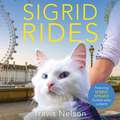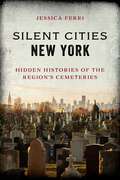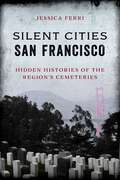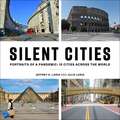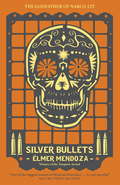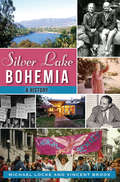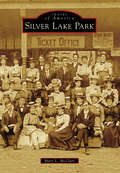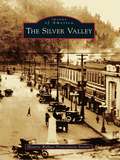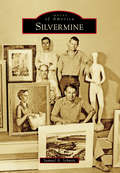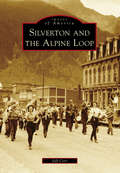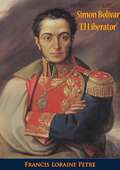- Table View
- List View
Signs & Shrines: Spiritual Journeys Across New Mexico
by Sharon NiedermanMake your next vacation a pilgrimage… Signs & Shrines: Spiritual Journeys Across New Mexico takes readers along the ancient pilgrimage trails that crisscross this enchanted state, a place where a rich multiplicity of cultures continue to thrive. From the winding High Road between Santa Fe and Taos to Warriors’ Spirit Way across the Black Range; through ghost towns and on to Silver City; to the Old Spanish Trail that originates in Abiquiu, you’ll find the pathways that spiritual seekers have followed for centuries. The mysteries of sacred sites, natural wonders, power spots, feast days, and festivals are here explained by one of the state’s most prolific and knowledgeable authors. In addition to providing cultural context that answers visitors’ questions about history and practices found only in New Mexico, the author provides clear directions, maps, and guidance on the best places to stay, dine, shop, and recreate on your route. Signs & Shrines is an innovative guide that will enrich the experience not only of spiritual seekers but of every visitor drawn to tour the Land of Enchantment.
Signs of Life, Love, and Other Miracles
by Stephanie Ager Kirz"Signs of Life, Love and other Miracles" by author Stephanie Kirz is a moving tale of Lost Love that is found in special moments throughout the world
Signs of Life: A Doctor's Journey to the Ends Of The Earth
by Stephen FabesA young doctor cycles around the world and discovers how societies treat their most vulnerable, in this thought-provoking and witty medical odysseyWhen Stephen Fabes left his job as an emergency-room doctor and set out to cycle around the world, frontline medicine quickly faded from his mind. The daily challenges of life on the road stack up as he navigates deserts—coaxing a few more miles from &‘Ol&’ Patchy&’ (his most faithful innertube)—and learns to live with the seeming constant threat posed by local wildlife, be it mangy dogs in Indonesia, grizzly bears in Alaska, or, in Australia, the common death adder, three words he was dismayed to find exist in sequence. But leaving medicine behind was not as easy as it seems. As Stephen crossed continents—on a journey that would take six years and cover more than 53,000 miles—he finds people whose health has suffered through exile, stigma, or circumstance and others, whose lives have been saved through kindness and community. After encountering a frozen body of a monk in the Himalayas, he is drawn ever more to healthcare at the margins of the world, to crumbling sanitoriums and refugee camps, to city dumps and war-torn hospital wards. In this gripping blend of true adventure and medical narrative, Stephen learns the value of listening to lives—not just solving diagnostic puzzles. Signs of Life challenges us to see care for the sick as a duty born of our compassion and our humanity.
Signspotting 4
by Doug LanskyFor intrepid travelers and armchair dreamers-the fourth collection of amazingly odd and simply hilarious signs found the world over. Want to take a tour of the "Elephant Dung Factory and Souvenir Shop"? How about visiting the towns of Bastardo and Moronville, and doing some shopping at Sad Décor or the Mayan Treasures Factory Outlet? Whether unsettling ("One Way Tours"), unfortunate ("Evil Poo Lookout"), or simply baffling ("Eels May Be Slippery"), the signs in this all-new collection will change the way you look at the printed world around you.
Signspotting III
by Doug LanskyA full-color illustrated collection of humorous, confusing, and amusing signs from around the globe. From ?UFO University? to ?Speedo Check Ahead? to ?Fecal Face Dot Gallery,? Signspotting III: Lost and Loster in Translation takes the reader on a pictorial worldwide tour of the bizarre and hysterical street signs and advertisements that provide way more laughs than information. .
Sigrid Rides: The Story of an Extraordinary Friendship and An Adventure on Two Wheels
by Travis NelsonFeaturing SIGRID SPEAKS - find out what those hisses, miaows and purrs really mean! When Travis Nelson arrived in London, he expected to embark on a new life and a new job. Coming from California, he'd uprooted his wife and his cat, Sigrid, and planned to be here for the long haul. Then Covid-19 struck. Travis's new job vanished as the company cut staff. For two years, and through successive lockdowns, he was stuck in limbo in an unfamiliar city, trying to find his way.To keep himself occupied, Travis set out to discover his adoptive home. He bought a bike and began cycling through London's streets and parks with his unusual travelling companion, Sigrid - his deaf, Norwegian Forest cat - who came along for the ride. But what started as a way of injecting routine and purpose into Travis's life in stressful times, created an internet sensation. When Travis began posting videos of the pair's rides on social media, he drew in another community of people looking for moments of joy in an anxious world.In this charming memoir, Travis charts his adventures with Sigrid. He unlocks a hidden London seen only from cyclist's viewpoint, as well as finding friendship and hope. Most of all, it is the story of one man's relationship with his feline companion - one that has given him direction and a sense of belonging at a time when he felt lost.(p) 2023 Octopus Publishing Group
Sigrid Rides: The Story of an Extraordinary Friendship and An Adventure on Two Wheels
by Travis Nelson'A one-man, one-cat mission to cheer people up' - The Mirror When Travis Nelson arrived in London, he expected to embark on a new life and a new job. Coming from California, he'd uprooted his wife and his cat, Sigrid, and planned to be here for the long haul. Then Covid-19 struck. Travis's new job vanished as the company cut staff. For two years, and through successive lockdowns, he was stuck in limbo in an unfamiliar city, trying to find his way.To keep himself occupied, Travis set out to discover his adoptive home. He bought a bike and began cycling through London's streets and parks with his unusual travelling companion, Sigrid - his deaf, Norwegian Forest cat - who came along for the ride. But what started as a way of injecting routine and purpose into Travis's life in stressful times, created an internet sensation. When Travis began posting videos of the pair's rides on social media, he drew in another community of people looking for moments of joy in an anxious world.In this charming memoir, Travis charts his adventures with Sigrid. He unlocks a hidden London seen only from cyclist's viewpoint, as well as finding friendship and hope. Most of all, it is the story of one man's relationship with his feline companion - one that has given him direction and a sense of belonging at a time when he felt lost.
Sigrid Rides: The Story of an Extraordinary Friendship and An Adventure on Two Wheels
by Travis Nelson'A one-man, one-cat mission to cheer people up' - The Mirror When Travis Nelson arrived in London, he expected to embark on a new life and a new job. Coming from California, he'd uprooted his wife and his cat, Sigrid, and planned to be here for the long haul. Then Covid-19 struck. Travis's new job vanished as the company cut staff. For two years, and through successive lockdowns, he was stuck in limbo in an unfamiliar city, trying to find his way.To keep himself occupied, Travis set out to discover his adoptive home. He bought a bike and began cycling through London's streets and parks with his unusual travelling companion, Sigrid - his deaf, Norwegian Forest cat - who came along for the ride. But what started as a way of injecting routine and purpose into Travis's life in stressful times, created an internet sensation. When Travis began posting videos of the pair's rides on social media, he drew in another community of people looking for moments of joy in an anxious world.In this charming memoir, Travis charts his adventures with Sigrid. He unlocks a hidden London seen only from cyclist's viewpoint, as well as finding friendship and hope. Most of all, it is the story of one man's relationship with his feline companion - one that has given him direction and a sense of belonging at a time when he felt lost.
Silences So Deep: Music, Solitude, Alaska
by John Luther Adams"[An] illuminating memoir." —Corinna da Fonseca-Wollheim, The New York TimesThe story of a composer's life in the Alaskan wilderness and a meditation on making art in a landscape acutely threatened by climate changeIn the summer of 1975, the composer John Luther Adams, then a twenty-two-year-old graduate of CalArts, boarded a flight to Alaska. So began a journey into the mountains, forests, and tundra of the far north—and across distinctive mental and aural terrain—that would last for the next forty years. Silences So Deep is Adams’s account of these formative decades—and of what it’s like to live alone in the frozen woods, composing music by day and spending one’s evenings with a raucous crew of poets, philosophers, and fishermen. From adolescent loves—Edgard Varèse and Frank Zappa—to mature preoccupations with the natural world that inform such works as The Wind in High Places, Adams details the influences that have allowed him to emerge as one of the most celebrated and recognizable composers of our time. Silences So Deep is also a memoir of solitude enriched by friendships with the likes of the conductor Gordon Wright and the poet John Haines, both of whom had a singular impact on Adams’s life. Whether describing the travails of environmental activism in the midst of an oil boom or midwinter conversations in a communal sauna, Adams writes with a voice both playful and meditative, one that evokes the particular beauty of the Alaskan landscape and the people who call it home.Ultimately, this book is also the story of Adams’s difficult decision to leave a rapidly warming Alaska and to strike out for new topographies and sources of inspiration. In its attentiveness to the challenges of life in the wilderness, to the demands of making art in an age of climate crisis, and to the pleasures of intellectual fellowship, Silences So Deep is a singularly rich account of a creative life.
Silent Cities New York: Hidden Histories of the Region's Cemeteries
by Jessica FerriNew Yorkers have always been pressed for space in life and in death. Central Park is synonymous with New York City. But without Green-Wood Cemetery, located in South Brooklyn, Central Park would have never existed. Founded in 1838, Green-Wood became the city&’s most popular tourist attraction. The cemetery was so popular that urban planners challenged architects to come up with plans for a separate green-space for Manhattan. Hence, both Central Park, founded in 1857, and Brooklyn&’s Prospect Park, in 1867, were born.Green-Wood presented not only a place to bury the dead but a meditative haven away from the hustle and bustle of the city. Other cemeteries followed in the park style, including Sleepy Hollow and Woodlawn. New York&’s changing cultural landscape made Ferncliff Cemetery one of the most coveted places to spend eternity, with the rising popularity of Westchester County and suburban living. New Yorkers even secured a place for the four-legged members of the family with Hartsdale Pet Cemetery, now the largest and oldest pet cemetery in the United States. From the movers and shakers of New York society, to corrupt political bosses and mafiosi, Jazz legends, and a Brooklyn native son who returned to Green-Wood as one of the most famous artists of the 20th century, the stories of the permanent residents of these cemeteries are just as diverse and vibrant as the city itself. To travel through the cemeteries of New York is to travel through the hidden history of what some consider to be the greatest city in the world.
Silent Cities San Francisco: Hidden Histories of the Region's Cemeteries
by Jessica FerriIn 1914, desperate for land after the Gold Rush brought a population explosion to San Francisco, the city exiled its cemeteries, barring burials within city limits and relocating its existing graveyards to the tiny town of Colma, just south of Daly City, spawning America's only necropolis, where the dead outnumber the living 1000 to 1. But there's more to the story of the Bay Area's cemeteries than this expulsion. Silent Cities San Francisco reveals the complex cultural makeup of the Bay Area, where diversity and history collide, pitting the dead against the living in a race for space and memorialization.
Silent Cities: Portraits of a Pandemic: 15 Cities Across the World
by Julie Loria Jeffrey H. LoriaA moving, recognizable look at life on lockdown and the effect the coronavirus pandemic had across the world—because every city had a story to tell, and at the end of it all, we were all in it together. In the past year, hospitals filled, highways and subways emptied, landmarks and parks were deserted, our healthcare workers became increasingly fatigued and frustrated, and nearly all human activity paused. In photographs, The Great Wall and The Colosseum look photoshopped, with no tourists in sight. This book is unique in that it creates a visual narrative to document that emptiness as a way to reflect and to find solace amid the shock. A year later, it's something we've all seen and can relate to. This is a stunning collection of the abandoned and austere sights of fifteen major cities throughout the world during the peak outbreak of COVID-19. With their fine art backgrounds and through their network of professional photographers, Julie and Jeffrey Loria worked together to capture the unprecedented lockdown conditions worldwide. The photos show a range of emotions from the physical and psychological weight of caskets being carried to a Rio cemetery, to the completely empty and eerie Times Square and Rodeo Drive, to the patriotic pride in Rome's t-shirt display honoring their Italian flag colors as a symbol of hope. The photographs are not only a reminder of the harrowing pandemic that hushed some of the world&’s greatest urban streets, but also proof that across the globe, we were all in this together. Beneath the somberness in these images, there is a hint of beauty amid the stillness, but most of all, there is the presence of hope and promise that we will thrive again. Cities featured include: New YorkJerusalemBostonTokyoParisLos AngelesRomeRio de JaneiroSan FranciscoWashington, DCLondonMiamiTel AvivMadridChicago
Silent Voices: Stories and Recognition for War Dogs of Vietnam and Canine Soldiers Today
by Alan Blain CunninghamStories and drawings of valiant war dogs. This compilation of pieces mainly follows the author's attempts to get a commemorative postage stamp for military war dogs and a memorial. [Poorly edited, errors left in place due to copyright laws.]
Silicon Valley
by Sam Shueh Beth WymanNestled at the south end of San Francisco Bay, there lies a fertile valley. Cradled by the ancient Diablo and Santa Cruz Mountain ranges, the region spans much of the Santa Clara Valley, curling north from Menlo Park into Palo Alto. At its eastern gateway lies Milpitas and in the south is the Evergreen area, in the shadow of Mount Hamilton. The heart of the valley is San Jose. For many years, each spring, fruit trees produced flower blossoms as far as the eye could see. After World War II, veterans returned home, attended local engineering schools, and quickly became engaged in electronics and aeronautics development. The discovery of semiconductors and computer and Internet technologies radically altered the area, sped its momentum, and earned it its title--the Silicon Valley--now arguably the world's preeminent center for technological advances. Like the seismic waves that created the region, the valley's economic peaks and plunges have shaped the lives of its residents, but they continue to look to the future, developing new technologies to advance mankind.
Silver Bullets
by Élmer MendozaTormented by past heartbreak and contemporary politics, for Edgar 'Lefty' Mendieta the news of the murder of lawyer Bruno Canizales represents just another day at the office in the drug-ridden city of Culiacán. It soon becomes clear that there is no shortage of suspects in a city where it's hard to tell the gangsters from the politicians. Canizales was the son of a former government minister and the partner of a drug baron's daughter, with his own penchant for cross-dressing and dangerous sex. What is less clear is why the assassin chose to use a silver bullet. And why, two days later, they seem to have struck again. In this sweltering city where a desire for the truth can be as dangerous as any drug, Mendieta's search for justice takes him from mansions to drug dens, in Élmer Mendoza's seminal founding text of Latin America's 'narco-lit' wave.
Silver Bullets
by Élmer MendozaTormented by past heartbreak and contemporary politics, for Edgar 'Lefty' Mendieta the news of the murder of lawyer Bruno Canizales represents just another day at the office in the drug-ridden city of Culiacán. It soon becomes clear that there is no shortage of suspects in a city where it's hard to tell the gangsters from the politicians. Canizales was the son of a former government minister and the partner of a drug baron's daughter, with his own penchant for cross-dressing and dangerous sex. What is less clear is why the assassin chose to use a silver bullet. And why, two days later, they seem to have struck again. In this sweltering city where a desire for the truth can be as dangerous as any drug, Mendieta's search for justice takes him from mansions to drug dens, in Élmer Mendoza's seminal founding text of Latin America's 'narco-lit' wave.
Silver Lake Bohemia: A History (American Chronicles)
by Michael Locke Vincent BrookSince the early 1900s, Silver Lake has been a magnet for iconoclastic writers, architects and political activists. Famed architect Frank Lloyd Wright, who designed the Hollyhock House for socialist and oil heiress Aline Barnsdall, drew a wave of visionary modernists to the area. Local civil rights advocate Loren Miller spearheaded the fight against housing discrimination. Silver Lake's Black Cat bar and Harry Hay's Mattachine Society were central to the early gay rights movement. Literary artists Anäis Nin and James Leo Herlihy made the neighborhood their home, as did other notables like first lady of baseball Effa Manley and "Hobo Millionaire" James Eads How. Michael Locke and Vincent Brook chronicle these and other people and places that helped make Silver Lake the bohemian epicenter of Los Angeles.
Silver Lake Park
by Mary L. McclureFrom modest beginnings as a local swimming and fishing spot, Silver Lake Park, established by Ralph H. Lodge in the 1870s, quickly grew to become one of northeast Ohio's most popular amusement parks. Thanks to its many exciting offerings, which included two roller coasters, a miniature railway, a merry-go-round, a dance pavilion, water toboggans, steamboat rides, live animal exhibits, and many other unique features, the park attracted up to 10,000 to 20,000 visitors a day from across Ohio and surrounding states. Always anxious to add new and thrilling attractions to the park, the Lodge family also introduced features described as the first public aquarium in the state of Ohio and the first aviation field in Summit County. In later years, the park added a popular Chautauqua, bringing the leading musical acts, entertainers, and orators of the day to the community.
Silver Linings: Travels Around Northern Ireland
by Martin FletcherNorthern Ireland has made headlines around the world for three decades. The province has become synonymous with conflict, terrorism and tortuous efforts to forge peace. But what is life there really like? In this enchanting and highly original book Martin Fletcher presents a portrait of Northern Ireland utterly at odds with its dire international image. He paints a compelling picture of a place caught in a time warp since the 1960s, of a land of mountains, lakes and rivers where customs, traditions and old-world charm survive, of an incredibly resourceful province that has given the world not just bombs and bullets but the Titanic, the tyre and the tractor, a dozen American presidents, two prime ministers of New Zealand and a Hindu god. He meets an intelligent, fun-loving, God-fearing people who may do terrible things to each other but who could not be more welcoming to outsiders. He describes a land of awful beauty, a battleground of good and evil, a province populated by saints and sinners that has yet to be rendered bland by the forces of modernity.
Silver Spring Township (Images of America)
by Christine Clepper Musser Senator Patricia VanceEstablished in 1757, Silver Spring Township is the fourth-oldest township in Cumberland County. The area was founded by the Scots-Irish, who cleared the area for farming and built taverns, inns, and mercantile businesses. Eventually, the villages of Hogestown and New Kingstown were established; these two villages are still home to many township residents. Rich in history, Silver Spring is home to the Silver Spring Presbyterian Church, the oldest church west of the Susquehanna River. Between 2012 and 2013, Silver Spring Township was the fourth-largest growing township in Pennsylvania. What were once heavily traveled Native American trails have become well-traveled highways and byways, and within a few hours, travelers can be in New York City, Philadelphia, Baltimore, and Washington, DC. Through vintage photographs, Silver Spring Township shares and celebrates the history of this well-preserved community.
Silver Valley, The
by Historic Wallace Preservation SocietyThe descent into Idaho from the Montana border down Lookout Pass on Interstate 90 largely follows the trail Capt. John Mullan blazed over 150 years ago. The Silver Valley is home to Shoshone County's seat, the historic silver-mining city of Wallace, which has been something of a phoenix rising out of the ashes of two great fires. Along with Wallace, the valley encompasses many other small mining towns, such as Mullan, Silverton, Osburn, Kellogg, Smelterville, Pinehurst, and Kingston, with diverse histories that are both humorous and heartbreaking. It also surrounds the Cataldo Mission, Idaho's oldest standing building, built by the Jesuits and the Coeur d'Alene tribe in 1848.
Silverado Canyon
by Susan DeeringHidden in the Santa Ana Mountains below Santiago Peak is a canyon called Silverado. The Spaniards called it Canon de la Madera because of the abundance of timber. The first non-native homesteaders arrived in 1876 to tend bees and grow fruit trees. With the discovery in 1877 of quartz deposits embedded with silver, the canyon became a hotbed of activity, with possibilities of newfound fortune for the hundreds of men who arrived there. Renamed Silverado City, the heart of the canyon turned into a bustling mining town. After the silver bust, peace and quiet returned and Silverado was promoted as a health resort, a place to "take the waters" that flowed from the natural sulfur springs. Attracted by the beauty of the canyon, city dwellers began visiting. Abandoned cabins were turned into small bungalows and used as vacation homes and eventually year-round residences. Through boom and bust, fire and flood, the canyon remains a unique and enchanting part of Orange County.
Silvermine (Images of America)
by Samuel A. SchmittStraddling the towns of Norwalk, Wilton, and New Canaan is the little valley known as Silvermine, an artists' colony whose rural feel has changed little since it was settled in the Colonial era. By the 19th century, a dozen mills were humming along the Silvermine River. When the mills became silent with the advent of steam power, the bucolic beauty of the valley attracted painters and sculptors, writers and poets, and illustrators and cartoonists who formed a celebrated artists' colony centered around the Silvermine Guild of Artists and the Silvermine Tavern. In 2006, an enclave of 85 buildings in the core neighborhood, including a number of artists' homes, were recognized as part of the Silvermine Center Historic District. Today, Silvermine continues to attract residents who value its artistic heritage and natural beauty.
Silverton and the Alpine Loop
by Jeff CorrAs the ancestral hunting grounds of mountain people known as the Utes, the future site of Silverton was explored by nomadic hunters for generations. During the 1860s, Charles Baker, an early mining prospector, discovered some mineral wealth in the area and spread highly exaggerated rumors that brought in even more prospectors. Significant wealth was found in Arrastra Gulch along the Alpine Loop, north of Baker's Park. From the beginning of its mining heritage, Silverton has gone through periods of boom to bust. In the 1950s, the area was discovered by Hollywood, increasing its appeal to tourism, and in the 1960s, the Durango & Silverton Narrow Gauge Railroad reinvested heavily to dedicate itself to tourist travel. Although mining continued on a limited basis up until the 1990s, Silverton's economy is now supported by those who come for its history, picturesque landscapes, fly fishing, jeeping, and hiking.
Simon Bolivar ‘El Liberator’: A Life Of The Chief Leader In The Revolt Against Spain In Venezuela, New Granada & Peru
by Francis Loraine PetreRenowned military Historian F. Lorraine Petre takes on the legacy of the Simon Bolivar, the liberator of the Hispano-American territories from misrule of the Spanish Empire.Simón José Antonio de la Santísima Trinidad Bolívar y Palacios[c] (24 July 1783 – 17 December 1830) was a Venezuelan military and political leader who led what are currently the countries of Colombia, Venezuela, Ecuador, Peru, Panama and Bolivia to independence from the Spanish Empire. He is known colloquially as El Libertador, or the Liberator of America.Simón Bolívar was born in Caracas in the Captaincy General of Venezuela into a wealthy criollo family...When the Spanish authority in the Americas weakened due to Napoleon's Peninsular War, Bolívar became a zealous combatant and politician in the Spanish American wars of independence.Bolívar began his military career in 1810 as a militia officer in the Venezuelan War of Independence, fighting Royalist forces for the first and second Venezuelan republics and the United Provinces of New Granada. After Spanish forces subdued New Granada in 1815, Bolívar was forced into exile on Jamaica. After befriending Haitian revolutionary leader Alexandre Pétion and promising to abolish slavery in South America, Bolívar received military support from Haiti. Returning to Venezuela, he established a third republic in 1817 and then crossed the Andes to liberate New Granada in 1819. Bolívar and his allies defeated the Spanish in New Granada in 1819, Venezuela and Panama in 1821, Ecuador in 1822, Peru in 1824, and Bolivia in 1825. Venezuela, New Granada, Ecuador, and Panama were merged into the Republic of Colombia (Gran Colombia), with Bolívar as president there and in Peru and Bolivia.





